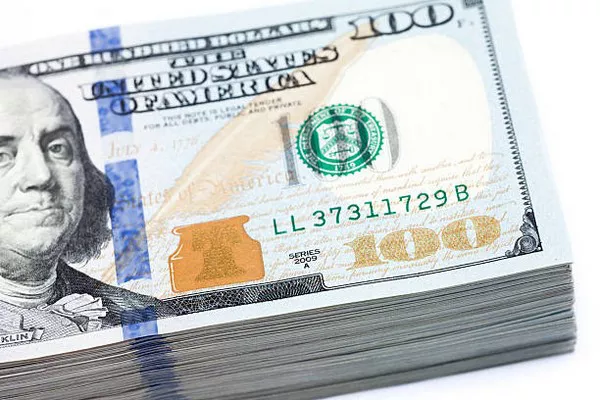The strength of the US dollar (USD) has been a focal point of global economic discussions, particularly in times of financial uncertainty. As the world’s primary reserve currency, the USD’s valuation influences global trade, investment flows, and economic stability. Understanding why the dollar remains strong involves examining multiple economic, political, and market-based factors.
1. Economic Fundamentals
a. Robust Economic Growth:
The US economy’s relative strength plays a pivotal role in underpinning the dollar’s value. Even amid global economic slowdowns, the US has demonstrated resilience, supported by strong consumer spending, technological innovation, and a dynamic labor market. High GDP growth rates relative to other major economies make the USD an attractive asset.
b. Interest Rates:
The Federal Reserve’s monetary policy significantly impacts the dollar’s strength. Higher interest rates in the US attract foreign capital seeking better returns on investments, boosting demand for the dollar. Conversely, when other central banks maintain lower interest rates, the interest rate differential further favors the dollar. For instance, the Fed’s stance on combating inflation through rate hikes has recently contributed to the dollar’s appreciation.
2. Safe Haven Status
During times of geopolitical uncertainty or financial market volatility, investors flock to safe-haven assets. The USD, alongside US Treasury bonds, is perceived as one of the safest investments. This status is bolstered by the political stability, transparent governance, and the extensive liquidity of US financial markets. When crises arise—whether they be wars, economic downturns, or pandemics—demand for the dollar typically increases, reinforcing its strength.
3. Global Trade and Finance
a. Reserve Currency:
The dollar’s status as the world’s primary reserve currency is a cornerstone of its strength. Central banks around the world hold substantial reserves of USD to manage their own exchange rates and to facilitate international trade. Approximately 60% of global foreign exchange reserves are held in dollars, reflecting deep trust in the currency’s stability and the US economy’s centrality in global trade.
b. Petrodollars:
The pricing of oil in USD significantly contributes to its demand. Countries that purchase oil need dollars to pay for their imports, thereby supporting the dollar’s value. This system, often referred to as the petrodollar system, ensures a steady global demand for USD.
4. Financial Markets and Investment Flows
a. Foreign Direct Investment (FDI):
The US is a prime destination for foreign direct investment due to its large, diversified economy and relatively stable business environment. High levels of FDI contribute to dollar demand as foreign entities exchange their currencies for USD to invest in American assets, from real estate to technology firms.
b. Stock Market Attractiveness:
US financial markets, particularly the stock market, are highly attractive to global investors. The presence of numerous multinational corporations, tech giants, and innovative startups makes the US stock market a preferred investment destination. This drives demand for the dollar, as investors need USD to purchase US equities and securities.
5. Policy and Geopolitical Factors
a. Trade Policies:
US trade policies and international economic agreements often influence the dollar’s strength. Policies that promote exports or tariffs that restrict imports can affect the trade balance, impacting currency valuation. For example, trade tensions and tariffs can lead to shifts in investor sentiment, often resulting in increased demand for the dollar as a perceived safe asset.
b. Geopolitical Stability:
The political and military influence of the United States on the global stage contributes to the dollar’s strength. The perception of the US as a dominant global power with significant influence over international affairs enhances trust in its currency. Geopolitical stability ensures that the dollar remains a reliable and stable store of value and medium of exchange.
6. Inflation and Economic Management
a. Inflation Control:
Effective management of inflation through monetary policy by the Federal Reserve helps maintain the dollar’s purchasing power. Lower inflation rates relative to other economies make the USD more attractive. When the Fed signals a strong commitment to maintaining price stability, it boosts investor confidence in the dollar.
b. Fiscal Policies:
US fiscal policies, including government spending and taxation, also affect the dollar’s strength. Sound fiscal management that promotes economic growth and reduces deficits can enhance the dollar’s value. Conversely, concerns about rising debt levels can impact long-term confidence but are often mitigated by the overall strength and size of the US economy.
7. Technological and Innovation Leadership
The US leads in technological innovation and has a significant impact on global industries, from information technology to biotechnology. The success of American tech companies attracts massive foreign investments and promotes the use of the dollar in global transactions. The dominance of Silicon Valley and other tech hubs in the US reinforces the strength and desirability of holding dollars.
8. Market Sentiments and Speculation
a. Investor Sentiment:
Market psychology and investor sentiment play crucial roles in currency valuation. Positive economic indicators, robust corporate earnings, and favorable market conditions can drive optimism about the US economy, increasing demand for the dollar. Conversely, negative sentiments can lead to volatility, though the dollar often benefits as a safe-haven currency in such scenarios.
b. Speculative Activities:
Speculative trading in forex markets can influence short-term movements in the dollar’s value. Traders who anticipate dollar appreciation based on economic data, geopolitical events, or central bank announcements engage in activities that can reinforce or amplify trends in the currency’s strength.
Conclusion
The strength of the US dollar is a multifaceted phenomenon influenced by economic fundamentals, geopolitical stability, global trade practices, and investor behavior. Its role as the world’s primary reserve currency, coupled with the robustness of the US economy, ensures sustained global demand. As long as the US maintains its economic vitality, political stability, and leadership in innovation, the dollar is likely to retain its preeminence in global finance. Understanding these dynamics is crucial for policymakers, investors, and businesses navigating the complexities of international markets.


